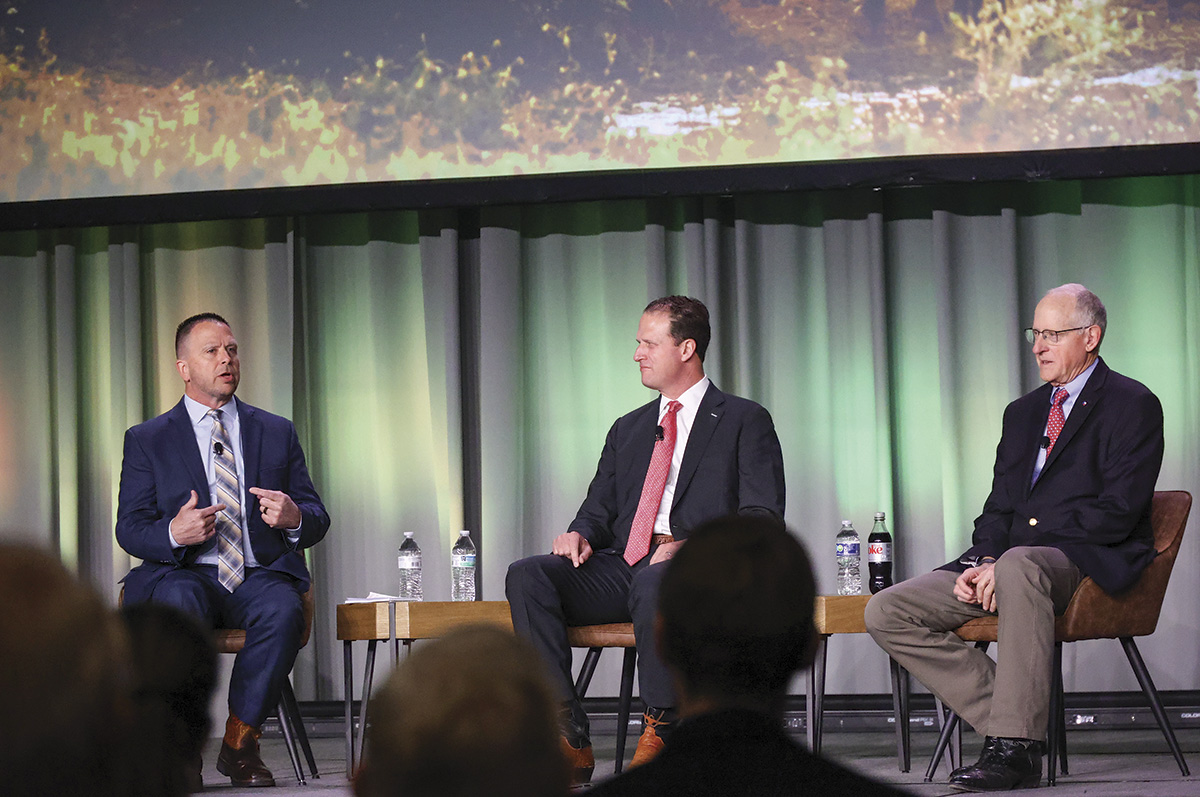Just days after fires moved across the Texas Panhandle, the Texas and Southwestern Cattle Raisers Association (TSCRA) hosted the 2024 Cattle Raisers Convention and Expo on March 22-23 in Fort Worth, Texas. Even with the devastating wildfires and bleak weather updates on everyone’s mind, optimism was shared during discussions on beef demand and prices, policy and technology updates, and a CattleFax highlight.
Beef demand and prices
While cattle prices are on the rise, so is the price of beef and consumer demand. Even with inflation and the rising cost of living, consumers are still willing to pay for quality beef, shared Jessica Finck of Merck Animal Health and Caitlyn Grundzinski of Commodity and Ingredient Hedging.
When it comes to buying beef, taste has been and continues to be the most important factor to consumers. Additionally, price and convenience make the list of top three factors for food purchases, Finck said.
While consumers are still willing to purchase beef, how they shop and eat has changed. There is less dining out. Shoppers are looking for deals and are more eager to buy in bulk and freeze meat to save a bit of money. Furthermore, how animals are raised is becoming more important to their purchases, said Finck. But, most importantly, consumers want quality – USDA Choice or Prime – and producers are giving them that, Grundzinski said.
Policy and technologies
During a policy update with U.S. House Rep. August Pfluger (R-Texas) and former House Committee on Agriculture Chairman Mike Conaway, many topics were covered, including:
- We may see a farm bill in 2024. It’s reported that it should be able to pass through the House; however, the Senate is another beast. More to come in the coming months on this.
- The southern border is of concern to Republicans, but their request for action is not being heard.
- The government is limited to only making policies on scopes one and two when it comes to emission regulations. This is a small win for the livestock industry.
- Fentanyl overdoses continue to rise. Republican lawmakers believe this should be seen as a form of Chinese chemical warfare.
- Paraguay beef is working through the approval process to come to the U.S. open market. This is concerning, as they have no traceability protocol and have cases of foot-and-mouth disease, which the U.S. has been able to prevent up to this point.
Additionally, traceability was a topic not only discussed in the policy update but also during sessions of the School for Successful Ranching.
Just days before the convention, Congress approved $15 million in appropriations for electronic identification (eID) tagging of cattle. The current traceability system was set in place in 2013, said Callahan Grund of U.S. Cattle Trace.
“Cattle disease traceability is a lynchpin in biosecurity of the U.S. beef industry, ensuring streamlined processes to resume commerce in the event of a disease outbreak,” Grund said.
Traceability allows officials to eliminate large populations of unaffected cattle and focus on smaller groups, increasing biocontainment time, he added.
"We're at a unique time in our industry where we can be proactive as producers and build a traceability system that works for us rather than have the government hand us one,” Grund said.

Tony St. James sat down with U.S. House Rep. August Pfluger and former House Committee on Agriculture Chairman Mike Conaway to discuss a federal political and policy update. Photo by Abigail George.
CattleFax and weather update
As far as the weather is concerned, we can say goodbye to El Nino and welcome back to La Nina as we get into the summer months, said Brian Bledsoe of Brian BledsoeWX LLC.
Looking into the late spring and early summer months, central and south Texas look abnormally dry and slightly warmer than usual. The Corn Belt also looks to be dry; however, rain will find its way there as the summer continues.
Bledsoe predicts this year may look fairly similar to that of 2020, specifically for Texas and other southern states. April and May look okay as far as precipitation goes – this is when El Nino will be replaced by La Nina. Then, there will be a drier-than-average June through August before a very dry fall.
He added that there could be severe weather possibilities for the Gulf Coast and even an earlier-than-normal hurricane season. And, unfortunately, it looks as if La Nina will stay at least through February 2025, compacting the drought and impacting the cattle market for time to come.
While the weather outlook wasn’t what producers were hoping to hear, Randy Blach of CattleFax shared a much better cattle market outlook.
“I think it's still the same basic message we’ve been seeing,” Blach said. “We're in a time of smaller supply, less production and higher price trends. I think you've seen all of those things unfold here over the course of the last 12 to 24 months, and I don't see any changes in those trends.”
Additionally, producers are not beginning to rebuild herds yet, Blach added. This is for three different reasons:
- There are no replacement females available yet.
- Drought is going to limit the number of replacement females producers can add.
- Interest rates continue to stay high, prohibiting producers from financing replacements.
To fill the need, the U.S. is importing cattle at a high rate from Canada and Mexico. There are also higher amounts of beef-on-dairy crosses entering the feedlots. There are also record-high prices for lean beef, as there are smaller amounts of cull cows left. To combat this, the U.S. is importing much of the beef from Australia.
Blach ended with a positive note for all cow-calf producers. “The largest share of the profit margin in this industry is going back to cow-calf producers. And, that’s where the largest share will be over the next two or three years – at the cow-calf level.”
He continued by adding that the market is doing what it was designed to do, allocating the largest amount of profit to the sector with the greatest demand.









